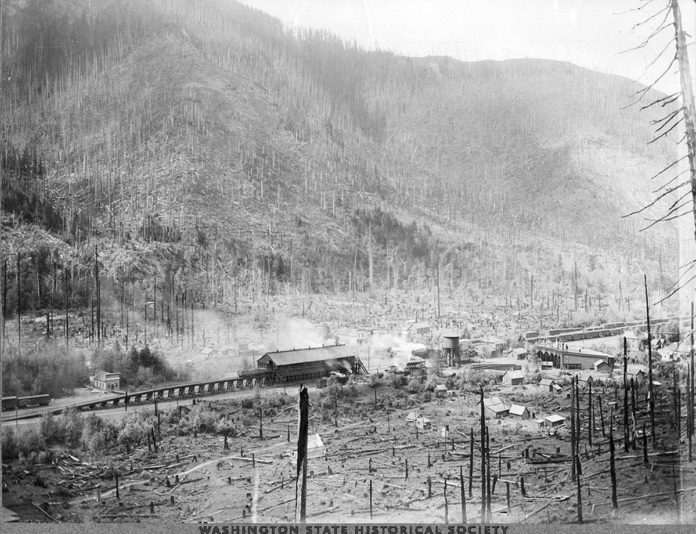Our Lester series continues this week with this 1915 overview of the now historic ghost town. As detailed in previous columns, Lester was primarily a railroad town located in the upper Green River Valley where Stampede Pass connects the east and west sides of the Cascades, about 12 miles southeast of Snoqualmie Pass.
The town was originally known as Deans, for the owner of the first sawmill in the region. The name was changed in 1891 to honor Lester Hansacker, a local Northern Pacific telegraph operator. During its most important period the town was home to assorted railroad facilities.
But its fortunes fell after diesel locomotives replaced steam locomotives in 1944. The Soundview Pulp Co. moved into Lester in 1948 to log timber, most of which was owned by the railroad. Soundview built one of the last of the old-fashioned logging camps complete with bunkhouses, offices, and the popular cookhouse where loggers ate meals of 6,000 to 8,000 calories per day.
It later became Scott Paper’s camp and lasted until 1978. Through the years the school district held the town together educating a host of notables including Mike Binetti who grew up in nearby Stampede. Binetti later became a teacher and principal for the Enumclaw School District, which absorbed the Lester School District in 1985.
At the time of merger there were over one-half million dollars still in the Lester’s bank account. This photo shows the ramp where railcars unloaded coal into the fueling bunkers – the large covered building in the center.
To the right is the water storage tank, an essential component for the coal-fired steam locomotives, which climbed the steep Stampede Pass. Further right is the roundhouse where the Northern Pacific locomotives were repaired and maintained.
This photo #1981.94.626 comes courtesy of the Washington State Historical Society located in Tacoma.









